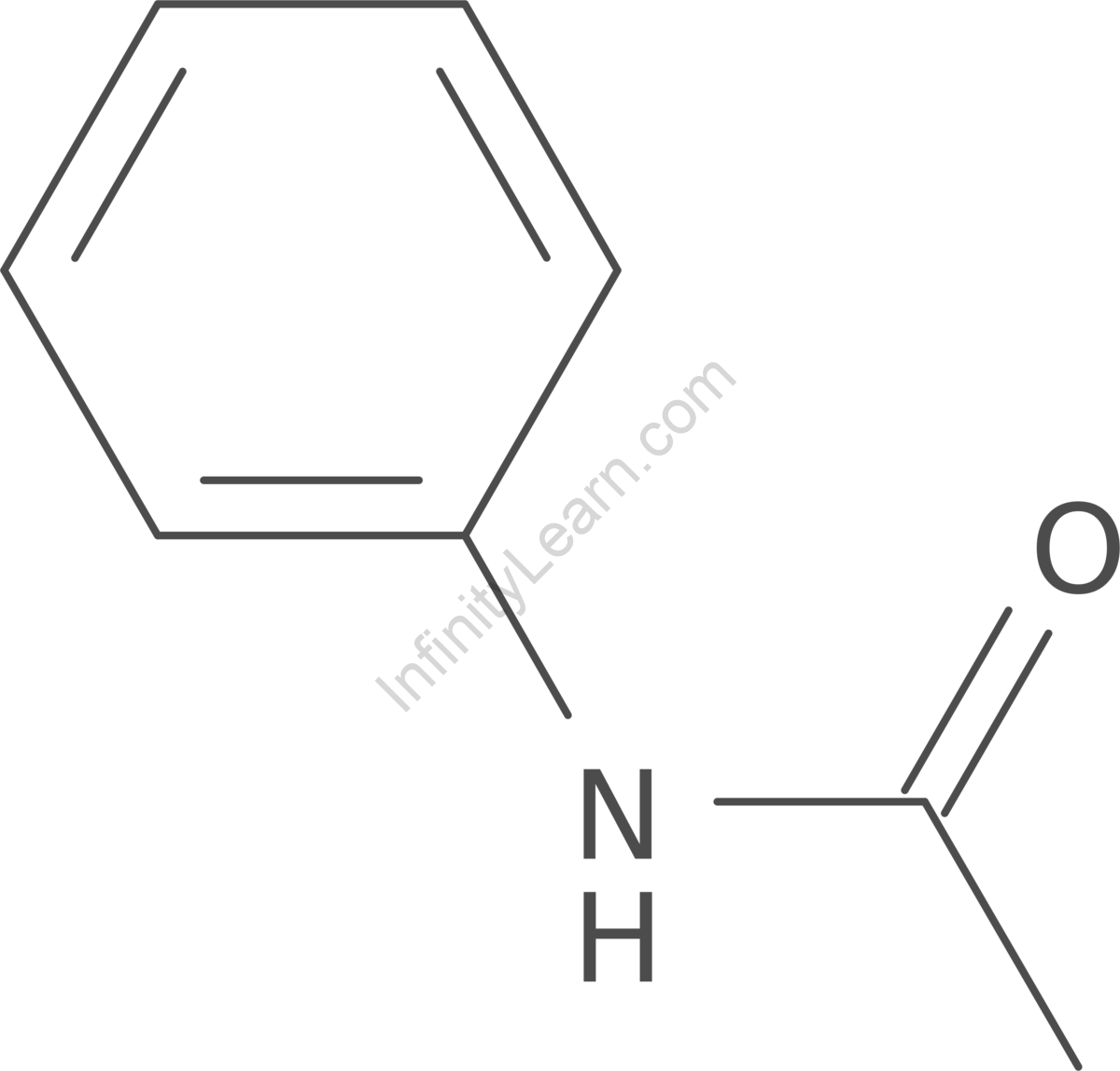Table of Contents

Acetanilide is a colourless, odourless solid compound that resembles a leaf or flake. It is also known as N-phenylacetamide, acetal, or acetanilid, and was previously known as Antifebrin. When aniline is heated in the presence of zinc dust and glacial acetic acid, it interacts with acetic anhydride to form acetanilide. As a result, the produced acetanilide is recrystallized to get pure crystals. The use of zinc dust is intended to avoid aniline oxidation during the process.
Preparation and characteristics
Acetanilide may be synthesized by combining acetic anhydride with aniline:
C6H5NH2 + (CH3CO)2O → C6H5NHCOCH3 + CH3COOH
The preparation used to be a standard experiment in introductory organic chemistry lab classes, but it has since been largely replaced by the preparation of either paracetamol or aspirin, both of which teach the same practical techniques (particularly recrystallization of the product) but avoid the use of aniline, a suspected carcinogen.
- Acetanilide is mildly soluble in water and generally stable.
- Pure crystals are plate-shaped and range in hue from colourless to white.
Applications
Acetanilide is used to stabilize cellulose ester varnishes and as a hydrogen peroxide breakdown inhibitor. It has also been used as an intermediator in the manufacture of rubber accelerators, colours and dye intermediates, and camphor. Acetanilide is used to make 4-acetamidobenzenesulfonyl chloride, a critical intermediary in the synthesis of sulfa medicines.
Uses in pharmaceuticals
- Acetanilide was the first aniline derivative discovered to have both analgesic and antipyretic qualities, and it was immediately put into medical practice as Antifebrin by A. Cahn and P. Hepp in 1886.
- However, its (apparently) intolerable toxic consequences, the most concerning of which was cyanosis owing to methemoglobinemia and, eventually, liver and kidney damage, drove the hunt for allegedly less toxic aniline derivatives such as phenacetin.
- After several years of inconsistent results, it was shown in 1948 that acetanilide was largely converted to paracetamol (acetaminophen) in the human body and that this metabolite was responsible for the analgesic and antipyretic characteristics.
- Methemoglobinemia was seen following acetanilide administration, which was attributed to the little amount of acetanilide that is hydrolyzed to aniline in the body.
Acetanilide in Everyday Life
- Acetanilide is a colourless, glossy chemical that can be utilized in the production of plates.
- It is employed in the field of photography.
- Acetanilide is also used to treat high fevers as a mild anaesthetic.
Acetanilide is a vital chemical molecule that is extensively employed in the pharmaceutical business. It is a white, odourless, solid, or flaky substance. Its preparation method is utilized in chemistry laboratories to teach students to organic compound synthesis.
FAQs
Is it possible for acetanilide to react with water?
Acetanilide dissolves much more easily in hot water than in cold water.
Is acetanilide poisonous?
Acetanilide is converted in the human body into a toxic phenolic metabolite with analgesic effects.
What is acetanilide's chemical property?
Acetanilide is an example of an amide. Amides are a sort of exceedingly weak base. Imides, on the other hand, are less basic and react with strong bases to form salts.



